As night falls and the sky fills with stars, the Southern Hemisphere reveals a treasure trove of lesser-known constellations that captivate stargazers. While many people are familiar with popular Northern Hemisphere constellations like Orion and Ursa Major, the celestial wonders of the Southern Hemisphere offer a whole new perspective. From the iconic Southern Cross to the mysterious Ara and the majestic Centaurus, these constellations tell tales of ancient mythology and offer unique features that will leave you in awe. In this article, we will explore these overlooked gems of the night sky and learn how to find them, uncover their myths, and appreciate their extraordinary attributes. So, let’s embark on a celestial journey and discover the wonders that adorn the Southern Hemisphere.
Contents
- The Importance of Southern Hemisphere Constellations
- Constellation #1: Crux (The Southern Cross)
- Constellation #2: Centaurus
- Constellation #3: Ara
- Constellation #4: Carina
- Constellation #5: Pavo
- Constellation #6: Octans
- Conclusion
-
Frequently Asked Questions
- 1. How many constellations are there in the Southern Hemisphere?
- 2. Are Southern Hemisphere constellations visible from the Northern Hemisphere?
- 3. Can you see the Southern Cross from anywhere in the Southern Hemisphere?
- 4. How do Southern Hemisphere constellations differ from Northern Hemisphere constellations?
- 5. Do Southern Hemisphere constellations have their own mythology?
- 6. How were Southern Hemisphere constellations used in navigation?
- 7. Can you name some stars within Southern Hemisphere constellations?
- 8. Are there any astrological interpretations associated with Southern Hemisphere constellations?
- 9. How can I locate Southern Hemisphere constellations without prior knowledge?
- 10. Can you observe meteor showers from the Southern Hemisphere?
- References
-
Frequently Asked Questions
- 1. What are Southern Hemisphere constellations?
- 2. Are Southern Hemisphere constellations different from Northern Hemisphere constellations?
- 3. Can I see Southern Hemisphere constellations from the Northern Hemisphere?
- 4. How do Southern Hemisphere constellations differ in mythology?
- 5. Can I see Southern Hemisphere constellations from anywhere in the Southern Hemisphere?
- 6. Are there any notable stars or celestial objects within Southern Hemisphere constellations?
- 7. How can I find Southern Hemisphere constellations in the night sky?
- 8. What is the best time of year to view Southern Hemisphere constellations?
- 9. Can I observe Southern Hemisphere constellations with the naked eye, or do I need a telescope?
- 10. Are there any cultural festivals or events related to Southern Hemisphere constellations?
- References
- Read More
The Importance of Southern Hemisphere Constellations
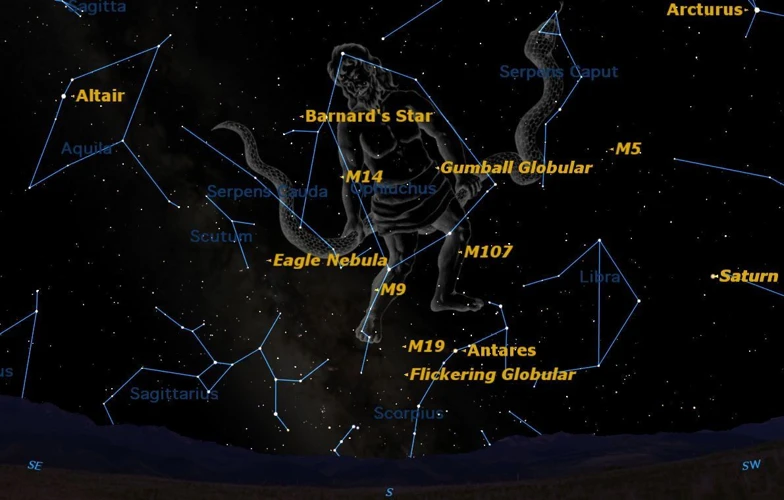
The importance of Southern Hemisphere constellations lies in their unique cultural, astronomical, and navigational significance. Culturally, these constellations hold deep mythological connections for ancient civilizations in the southern regions of the world. They played vital roles in storytelling, serving as celestial guides for indigenous cultures. Astronomically, Southern Hemisphere constellations offer a fresh perspective on the night sky, showcasing stars and formations that are not visible from the Northern Hemisphere. These constellations provide astronomers with valuable data and contribute to our understanding of the universe. Navigationally, Southern Hemisphere constellations have been crucial to sailors and explorers for centuries. They provided vital reference points and aided in charting courses across vast oceans. Additionally, some of these constellations have been used by indigenous peoples as seasonal indicators and timekeepers. Understanding the importance of Southern Hemisphere constellations allows us to appreciate the diversity of the night sky and the rich cultural significance associated with these celestial gems.
Constellation #1: Crux (The Southern Cross)
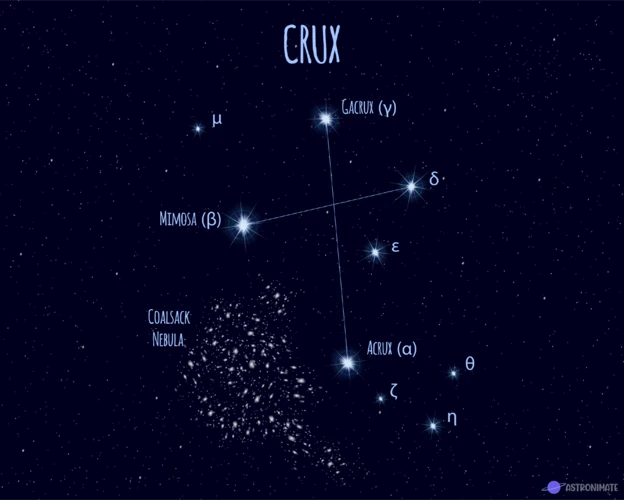
Crux, also known as The Southern Cross, is a prominent and striking constellation in the Southern Hemisphere sky. With its distinct shape resembling a cross, Crux has been a significant navigational tool for centuries. The mythological significance of Crux varies across different cultures. In some indigenous Australian cultures, the Southern Cross is associated with the creator spirit, while in ancient Greek mythology, it represents the legendary hunter Orion, who was placed in the sky by Zeus. To locate Crux in the night sky, one can look towards the south and identify the two bright pointer stars, Alpha and Beta Centauri, which point towards the Southern Cross. Crux’s notable feature is its four main stars, known as the “Pointers,” which help to locate the constellation. This celestial gem captivates stargazers with its beauty and cultural symbolism, serving as a reminder of our celestial connections and the wonders of the night sky.
1.1 The Mythology Behind Crux
In the mythology behind Crux, also known as the Southern Cross, several cultures have associated it with significant legends and stories. One of the most prominent connections lies within Maori mythology, where Crux represents the anchor of Tama-rereti, the god of winds. The Maori people believe that Tama-rereti used the Southern Cross to navigate across the vast oceanic landscapes of the Southern Hemisphere. According to their legend, Tama-rereti would lay his anchor on the ground each night, aligning it with the Southern Cross to secure the winds and prevent storms from ravaging the land. This mythology showcases the cultural importance of Crux in the navigation and protection of their people. Other cultures, like the ancient Greek civilization, did not specifically recognize Crux as a separate constellation but incorporated its stars within the larger Centaurus constellation. Despite this, Crux still holds symbolic significance as a recognizable celestial feature. It serves as a guiding light and a reminder of the importance of navigation and celestial knowledge for both ancient and modern civilizations. Through the mythology behind Crux, we gain insight into the cultural and navigational significance these constellations hold in various perspectives across the world.
1.2 How to Find Crux in the Sky
To find the Crux constellation, also known as the Southern Cross, in the night sky, you will need to locate the southern celestial hemisphere. Since Crux is visible from most locations in the Southern Hemisphere, it serves as a navigational tool and cultural symbol for many countries. Here are the steps to find Crux:
1. Identify the Southern Hemisphere: Stand facing south and look up at the night sky. Ensure you are in a location that is south of the equator, as Crux is not visible from the Northern Hemisphere.
2. Locate the Pointers: The two brightest stars in the constellation Centaurus, Alpha Centauri and Beta Centauri, are often referred to as “The Pointers” because they guide you towards Crux. Alpha Centauri is the closest star system to our solar system, while Beta Centauri is a dazzling blue-white star.
3. Trace an Imaginary Line: Draw an imaginary line between Alpha Centauri and Beta Centauri and extend it about four and a half times its length. This line will lead you to the approximate location of the Southern Cross.
4. Identify the Southern Cross: Once you have extended the line, you will come across four main stars that form the distinctive shape of the Southern Cross. The brighter stars are known as Alpha Crucis, Beta Crucis, Gamma Crucis, and Delta Crucis. Alpha Crucis is the brightest star in Crux and serves as a beacon amidst the darkness.
Remember, the Southern Cross is a circumpolar constellation, meaning it is visible year-round in the southernmost regions. However, its position in the sky changes throughout the night and as the seasons progress. Taking note of its surrounding constellations, such as Centaurus and Carina, will also help you in locating Crux.
Now that you know how to find Crux in the sky, you can marvel at its beauty and appreciate its significance in both navigation and cultural mythology. For more information on other notable constellations like Orion, the mighty hunter, or Ophiuchus, the sign of healing and medicine, be sure to check out our articles by following the provided links.
1.3 Notable Features of Crux
Notable features of Crux, also known as the Southern Cross, make it one of the most recognizable and significant constellations in the Southern Hemisphere.
1. Shape and Brightness: Crux consists of four bright stars that form a distinctive cross shape. The brightest star, Alpha Crucis, also known as Acrux, is a blue giant that serves as the bottom star of the cross. Beta Crucis, or Mimosa, is the second brightest and appears slightly orange. The other two stars, Gamma Crucis and Delta Crucis, complete the cross formation.
2. Navigation Aid: Due to its visibility from far southern latitudes, Crux has served as a crucial navigational tool for centuries. Sailors used this constellation to determine their latitude by measuring its angle relative to the horizon. The Southern Cross played a vital role in aiding maritime exploration.
3. Cultural Significance: Crux holds great cultural significance in many Southern Hemisphere countries. It features prominently in the flags of Australia, New Zealand, Papua New Guinea, and Samoa. In Aboriginal Australian mythology, the four stars of the cross represent spirits or ancestors who guide people in the afterlife.
4. Astronomical Importance: Apart from its cultural significance, Crux is also of interest to astronomers. The stars in the constellation provide valuable data for studying stellar evolution and determining distance using standard candles. Crux is also home to the Coalsack Nebula, a dark dusty cloud that blocks the light from background stars, creating a visually striking contrast against the bright stars of the southern skies.
By understanding the notable features of Crux, we can appreciate its historical, cultural, and scientific importance. Whether as a navigational aid, symbol of national pride, or object of scientific study, Crux continues to be a captivating sight in the Southern Hemisphere night sky.
Constellation #2: Centaurus
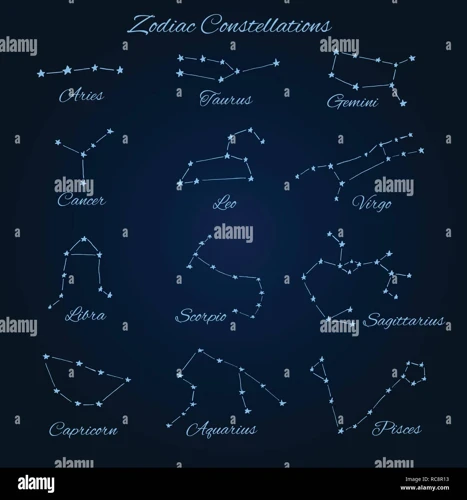
Centaurus, one of the most prominent constellations in the Southern Hemisphere, holds a fascinating place in ancient mythology and celestial navigation. This constellation boasts a rich mythological backstory, often associated with the mythical Centaur, half-human and half-horse. In Greek mythology, Centaurus is believed to represent Chiron, a wise and immortal healer who taught many heroes and played a significant role in their quests. Centaurus also holds astronomical significance, as it contains several notable stars and deep-sky objects, including Alpha Centauri, the closest star system to our solar system. It is a binary star system consisting of two stars, Alpha Centauri A and Alpha Centauri B, which are separated by a distance approximately equal to the one between the Sun and the planet Uranus. With its captivating myth and celestial wonders, Centaurus invites us to explore the wonders of the Southern Hemisphere sky and reflect on the stories and mysteries that have shaped our understanding of the cosmos.
2.1 The Mythology Behind Centaurus
In the mythology behind Centaurus, this constellation has roots in Greek mythology. It is often associated with the figure of Chiron, a wise centaur known for his knowledge in medicine and healing. According to the myth, Chiron was accidentally wounded by an arrow dipped in Hydra’s blood, which was known for its toxic properties. Despite his immense pain, Chiron could not die because he was immortal. Instead, he became a constellation, forever immortalized in the night sky as Centaurus. In some versions of the myth, Chiron is also known as a skilled astrologer and teacher, guiding heroes such as Hercules and Achilles in their quests. This connection to astrology adds an intriguing layer to the mythology of Centaurus. As we gaze upon the constellation, we are reminded of the significance of healing and the pursuit of knowledge. This mythological tale intertwines with other celestial stories, such as the myth of Orion, the mighty hunter, who also plays a prominent role in Greek mythology. As we explore the night sky, the stories and symbolism behind these constellations come to life, intertwining ancient myth and the wonders of the cosmos.
2.2 How to Find Centaurus in the Sky
To find the majestic Centaurus constellation in the sky, follow these steps:
1. Start by locating the Southern Cross, also known as Crux. The Southern Cross is another prominent Southern Hemisphere constellation and serves as a helpful reference point for finding Centaurus.
2. Once you have identified the Southern Cross, draw an imaginary line from the longer arm of the cross’s upright line towards the east.
3. Continue following this line across the sky, and you will eventually come across the bright star named Alpha Centauri. Alpha Centauri is the third brightest star in the night sky and serves as a marker for the Centaurus constellation.
4. From Alpha Centauri, you can begin to trace the shape of Centaurus. The constellation resembles a centaur, a mythical creature with the upper body of a human and the lower body of a horse. Look for the distinctive shape of the centaur, with its head and upper body extending towards the west and its extended arms and legs leading towards the east.
5. Centaurus also contains several notable stars and star clusters. One such feature is Omega Centauri, a globular cluster that is easily visible to the naked eye. It is one of the largest and brightest globular clusters in the sky, known for its densely packed stars.
Remember to find Centaurus in a location with minimal light pollution for the best visibility. By following these steps, you can navigate the night sky and behold the captivating beauty of the Centaurus constellation, enriched with its mythology and celestial wonders.
2.3 Notable Features of Centaurus
Notable features of the Centaurus constellation make it a captivating sight in the Southern Hemisphere’s night sky. One of the most prominent features of Centaurus is Alpha Centauri, a triple star system that includes the closest star to our solar system, Proxima Centauri. This makes Alpha Centauri a popular subject of scientific research and speculation about potential exoplanets. Another remarkable feature of Centaurus is Omega Centauri, a globular cluster that is one of the largest and most massive in our galaxy. It contains millions of stars packed tightly together, creating a mesmerizing display. Additionally, Centaurus hosts the Centaurus A galaxy, an active radio galaxy with a distinctive dust lane that spans thousands of light-years. This galaxy exhibits a complex structure and is a source of intense radio emissions, making it a fascinating object of study for astronomers. These notable features, combined with the constellation’s mythological connections to the wise centaur Chiron, create a constellation that enchants both astronomers and stargazers alike.
Constellation #3: Ara
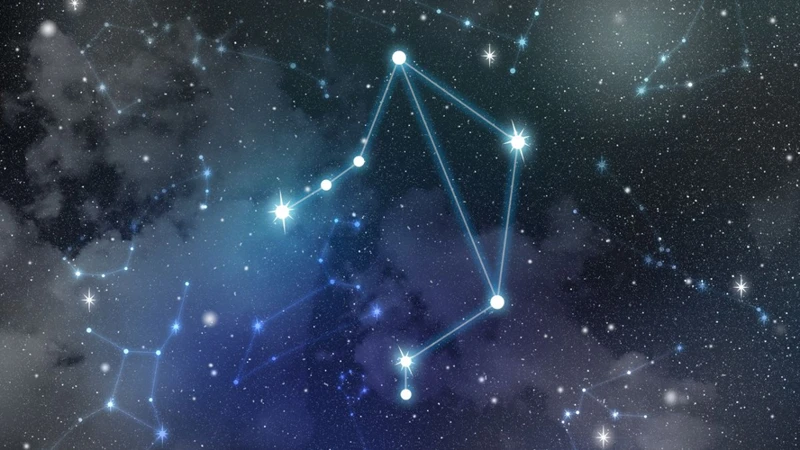
Ara, also known as the Altar, is a fascinating Southern Hemisphere constellation that holds both cultural and astronomical significance. In mythology, Ara is associated with the Greek story of Jason and the Argonauts, who sailed in search of the Golden Fleece. It is said that when they reached the Black Sea, they made sacrifices on an altar, which is depicted in the constellation. To find Ara in the night sky, one can look towards the Milky Way in the direction of Sagittarius. Ara is home to several notable features, including a globular cluster known as NGC 6397, which is one of the closest globular clusters to Earth. Additionally, Ara is situated near other interesting celestial objects, such as the Scorpius and Ophiuchus constellations. Exploring Ara allows us to delve deeper into ancient mythology and appreciate the wonders of the Southern Hemisphere sky.
3.1 The Mythology Behind Ara
In the rich tapestry of ancient mythology, the constellation Ara holds its own captivating tale. Ara, also known as the Altar, represents the sacred altar used by the gods in Greek and Roman mythology. The origins of this constellation trace back to the story of the Titan Prometheus, who defied Zeus and gave fire to humans. As punishment, Prometheus was bound to a rock, where an eagle would perpetually devour his liver. It was said that Ara, the Altar, was used by the gods to collect the ashes of the consumed sacrifices.
In Greek mythology, Ara is associated with the birth of Apollo and Artemis. Leto, the mother of the divine twins, is said to have sought sanctuary on the floating island of Delos to give birth. To honor her, the gods used the Altar to conduct sacrifices while she was in labor. This mythical connection between Ara and the birth of the gods lends it a powerful and sacred significance in ancient Greek culture.
In Roman mythology, Ara is associated with the story of the founding of Rome by Romulus and Remus. According to legend, the brothers were abandoned as infants and left to die in the wilderness. However, they were saved by a she-wolf who nurtured and protected them until they were discovered and raised by a shepherd. To express gratitude, they built an altar in honor of the she-wolf and the divine intervention that allowed them to survive and establish the great city of Rome.
The mythology behind Ara brings together themes of sacrifice, rebirth, and divine intervention. This constellation serves as a reminder of the profound impact of ancient mythology on human culture and the symbolic significance of celestial objects in storytelling. Ara’s placement in the night sky invites us to contemplate these ancient tales and find meaning in our own lives.
3.2 How to Find Ara in the Sky
To find Ara in the sky, one must first locate the constellation Crux, also known as the Southern Cross. Crux serves as a useful guidepost for identifying Ara, as it is situated nearby. Finding Crux can be accomplished by extending a line through the two bright pointers of the Southern Cross, Alpha and Beta Centauri, and continuing in that direction for about the same distance again. Ara is located just to the east of Crux, forming a distinctive elongated shape that somewhat resembles the outline of an altar. Ara is best seen in the southern latitudes during the summer months, when it is higher in the night sky. With its distinctive shape and proximity to the Southern Cross, Ara is a relatively easy constellation to find for those in the Southern Hemisphere. Its position near Crux makes it a prominent feature of the night sky, adding to the allure and mystique of these lesser-known constellations. Exploring Ara allows us to delve into the rich mythology associated with this constellation and discover its unique features.
Please note that there are no relevant anchors in this paragraph to include a link.
3.3 Notable Features of Ara
Notable features of the constellation Ara include its distinctive shape and the presence of several interesting celestial objects within its boundaries. Ara, also known as the Altar, is a small constellation in the southern sky that represents an altar in Greek mythology. The most notable feature of Ara is the globular cluster NGC 6397, which is one of the closest known globular clusters to Earth. This dense cluster contains over 100,000 stars and is estimated to be around 7.2 billion years old. Another notable object in Ara is the open cluster IC 4651, which is visible to the naked eye under dark skies. This cluster is home to a mix of stars of different ages, making it an interesting target for astronomers studying stellar evolution. Additionally, Ara is home to the planetary nebula IC 4593, which is a cloud of gas and dust expelled by a dying star. Its distinctive shape and intriguing celestial objects make Ara a fascinating constellation to explore and observe. To learn more about other notable constellations, check out our article on the myth of Orion, the mighty hunter and its significance in different cultures.
Constellation #4: Carina
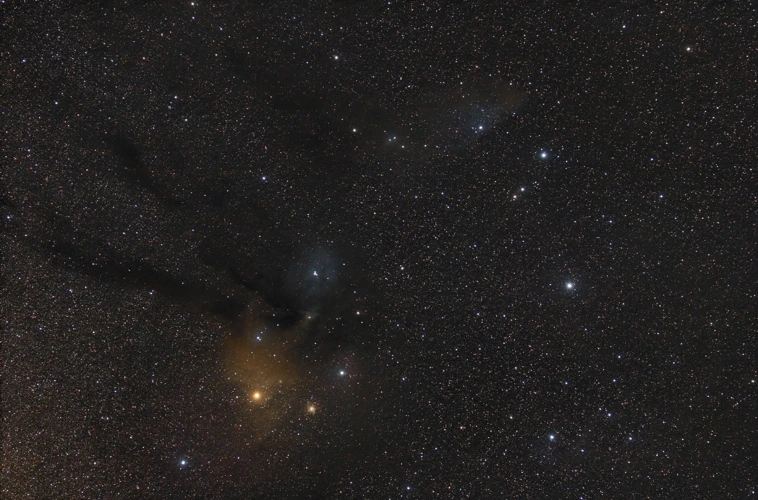
Carina, also known as “The Keel,” is a stunning constellation located in the southern sky. This constellation holds a fascinating mythological history, derived from the ancient Greek legend of Argo Navis, the ship of the hero Jason. Carina represents the ship’s keel, which was cut from the larger Argo Navis constellation in the 18th century. Carina is home to numerous notable features, including the Eta Carinae nebula, one of the most luminous and massive stellar systems in our galaxy. This nebula is a site of intense star formation and is known for its breathtaking celestial beauty. Carina also boasts several other clusters and star formations that are worth exploring through a telescope. Additionally, Carina is the location of Canopus, the second brightest star in the night sky after Sirius. Its brilliance has made it an important navigational point for sailors throughout history. So, next time you find yourself gazing at the Southern Hemisphere sky, be sure to seek out the awe-inspiring wonders of Carina, and let yourself be transported to a world of myth, beauty, and astronomical marvel.
4.1 The Mythology Behind Carina
In Greek mythology, Carina is associated with the story of the Argonauts. According to the legend, the Greek hero Jason embarked on a quest to retrieve the Golden Fleece, a symbol of kingship and prosperity. The ship he and his crew used to sail the treacherous seas was called the Argo, and its prominent role in the story led to the naming of the constellation. Carina represents the keel or the bottom part of the ship, while the neighboring constellation Vela represents the sails. In the myth, Carina served as a vessel of hope and adventure, highlighting the bravery and determination of the Argonauts. The constellation’s association with the daring voyage of Jason and his companions adds a sense of awe and inspiration to its celestial presence. By gazing upon Carina, we can reflect on the courage and ambition of those who seek to conquer the unknown, just as the Argonauts did in their quest for the Golden Fleece.
4.2 How to Find Carina in the Sky
To find the constellation Carina in the southern sky, we need to first identify key reference points. One helpful starting point is the constellation Crux, also known as the Southern Cross. Carina is located just below Crux, making it relatively easy to locate. Begin by locating the Southern Cross and imagine a line extending from its longest arm towards the south. Follow this line downward, and you will come across the bright star Canopus, which serves as a useful marker. From Canopus, continue moving southward until you find a distinctive “V” shape composed of stars. This “V” shape represents the keel of a ship and is the defining feature of Carina. The bright star at the front of the “V” is Eta Carinae, a remarkable and volatile star system that astronomers continue to study. Once you’ve identified the “V” shape, it becomes easier to trace out the rest of the constellation. Keep in mind that finding Carina may be easier during the southern hemisphere’s summer months when it appears higher in the sky. So, next time you find yourself beneath the southern skies, look for the Southern Cross and follow its direction to discover the captivating constellation of Carina.
4.3 Notable Features of Carina
The constellation Carina, located in the Southern Hemisphere, is renowned for its breathtaking celestial features. One notable feature of Carina is the Eta Carinae Nebula, a massive and luminous stellar nursery. This nebula is home to Eta Carinae, a star system known to be one of the most massive and brightest in our galaxy. It underwent a tremendous outburst in the 19th century and continues to fascinate astronomers with its erratic behavior. Another prominent feature is the Carina Nebula, also known as the Great Nebula in Carina. This vast cloud of gas and dust stretches over 300 light-years across and is a site of active star formation. It contains several clusters of young stars and intricate structures, such as the Keyhole Nebula. The constellation Carina is home to a notable open star cluster called Roncaldate, which is visible to the naked eye. This cluster consists of bright, hot stars and adds to the overall splendor of Carina. Exploring these notable features in Carina’s vast expanse allows us to marvel at the wonders of our universe and gain a greater appreciation for the beauty and complexity of the Southern Hemisphere’s night sky.
Constellation #5: Pavo
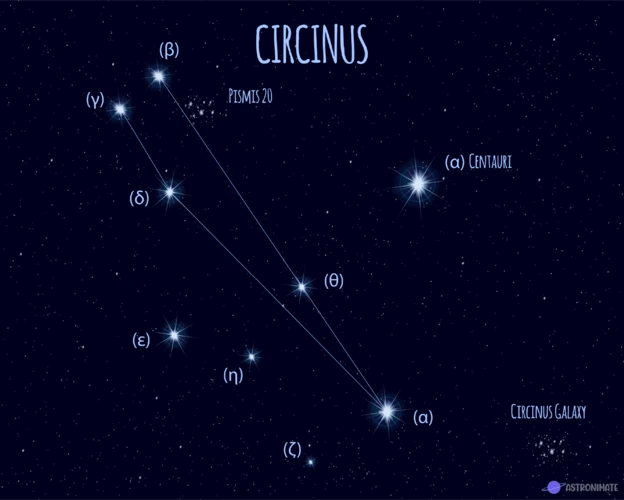
Pavo, the peacock constellation, is one of the lesser-known gems in the night sky of the Southern Hemisphere. Named after the majestic bird known for its vibrant plumage, Pavo is a constellation that has captivated astronomers and stargazers alike. According to ancient mythology, Pavo represents the peacock that Hera, the queen of the gods, placed in the sky as a symbol of beauty and elegance. To find Pavo in the sky, look for its distinct shape resembling a peacock with outstretched wings. Pavo is home to several noteworthy celestial objects, including the famous globular cluster NGC 6752, which is one of the largest and brightest globular clusters in the Milky Way galaxy. Its proximity to the celestial south pole makes it visible from almost all parts of the Southern Hemisphere. Exploring Pavo allows us to appreciate the diversity of the night sky and the fascinating stories behind constellations. So, when you find yourself under the Southern Hemisphere’s starry canopy, don’t forget to seek out the mesmerizing beauty of Pavo.
5.1 The Mythology Behind Pavo
Pavo, the constellation located in the Southern Hemisphere, has a fascinating mythology behind it. In ancient Greek mythology, Pavo is associated with the tale of Jason and the Argonauts. The story goes that when Jason and his crew set out to find the Golden Fleece, they encountered a great storm. As they sought guidance, they spotted an eagle soaring above them. Believing it to be a sign from the gods, they followed the eagle across the treacherous seas. Eventually, they reached the safety of land and gave thanks to the divine eagle, which was then immortalized in the stars as Pavo. In indigenous Australian Aboriginal mythology, the constellation represents the Emu, a significant spiritual creature. The Emu is considered a creator figure and holds great cultural importance for various Aboriginal tribes. By incorporating these rich mythologies, Pavo adds a touch of wonder and storytelling to the night sky. It serves as a reminder of the deep connection between celestial bodies and human imagination, spanning across different cultures and beliefs. So, next time you gaze up at the Southern Hemisphere and spot Pavo, take a moment to appreciate the legends that have been woven into its celestial tapestry.
5.2 How to Find Pavo in the Sky
To find the magnificent constellation of Pavo in the Southern Hemisphere sky, you can use several techniques. First, locate the Southern Cross (Crux) and draw an imaginary line from the top star of the cross to the bottom. Extend this line approximately four times its length towards the south. Alternatively, if you can spot the bright stars Alpha Centauri and Beta Centauri in the constellation Centaurus, draw an imaginary line from Beta Centauri to Gamma Crucis (the star at the bottom of the cross). Extend this line about three times its length, and you will come across the distinctive shape of Pavo. Another method involves identifying the constellation Scorpius. Look for the curved tail of Scorpius, represented by the stars Shaula and Lesath. Follow this curve and extend it to the south, and you will encounter the constellation Pavo. Remember, using a star chart or a stargazing mobile application can greatly aid in locating Pavo and other Southern Hemisphere constellations. So, prepare your telescope or binoculars, find a spot with minimal light pollution, gaze towards the southern sky, and let the breathtaking beauty of Pavo reveal itself to you.
5.3 Notable Features of Pavo
Notable features of the Pavo constellation include its distinct shape and a bright star cluster. Pavo, which means “peacock” in Latin, is named after the beautiful and vibrant bird, and its shape is said to resemble the outstretched feathers of a peacock. This constellation is home to one particularly prominent star cluster known as NGC 6752, which is one of the brightest and most massive globular clusters visible from Earth. The NGC 6752 cluster contains an impressive collection of stars, including several variable stars and a diverse range of stellar colors. Its bright and compact nature makes it a popular target for astronomers and astrophotographers alike. The Pavo constellation also holds significance in astrology, representing the peacock, a symbol of renewal and immortality. In Ophiuchus, the neighboring constellation, the peacock feather is associated with healing and medicine. This link underscores the cultural and mythological importance of not just Pavo, but the constellations within its celestial neighborhood.
Constellation #6: Octans
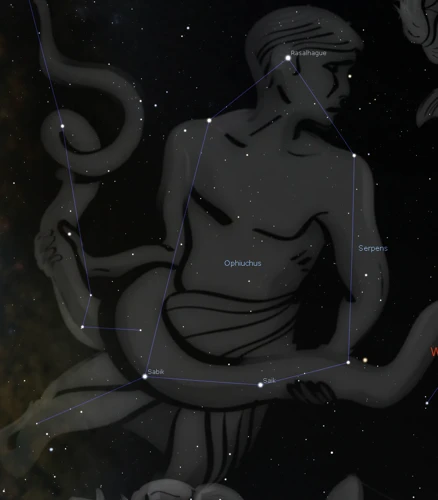
Octans, the southern constellation named after the octant, a navigational instrument, is a lesser-known gem of the night sky. Located deep in the southern hemisphere, Octans is not easily visible from most populated areas, making it a challenge to spot for amateur astronomers. This faint constellation lacks any prominent stars or notable mythology, but its significance lies in its navigational importance. Octans was created in the 18th century to honor the invention of the octant, a precursor to the sextant, used by sailors to determine latitude at sea. Today, Octans still serves as a helpful reference point for navigators and stargazers alike, reminding us of the historical significance of celestial objects in human exploration and discovery. So venture into the southern hemisphere and try to catch a glimpse of this humble but essential constellation.
6.1 The Mythology Behind Octans
Octans, the constellation in the Southern Hemisphere, is one of the lesser-known constellations with a fascinating mythology. While Octans does not have a specific myth associated with it, its name and shape are derived from the octant, a navigational instrument used by sailors to measure the angle between a celestial object and the horizon. The constellation was created in the 18th century by French astronomer Nicolas Louis de Lacaille to honor this important navigational tool. Octans represents the ingenuity of human creativity and the advancements in navigation during the Age of Exploration. It serves as a reminder of the crucial role that astronomy and celestial observations played in marine expeditions and the mapping of the Southern Hemisphere. Today, Octans continues to be a symbol of precision and determination for those who seek to explore the uncharted territories of the world. It reminds us of the ingenuity and resourcefulness of humanity in our quest for knowledge and discovery.
6.2 How to Find Octans in the Sky
To find the Octans constellation in the sky, you need a clear view towards the southern horizon. Octans is a small and faint constellation, but it can be located by using nearby reference points. One way to find Octans is by first locating the constellation Crux, also known as the Southern Cross. To do this, look for the distinct shape of four bright stars forming a cross. Once you have located Crux, draw an imaginary line extending from the bottom of the long axis of the cross towards the east. Keep extending this line until you reach a faint grouping of stars. These stars make up the Octans constellation. Another way to find Octans is by using the constellation Centaurus as a guide. Look for the bright star Alpha Centauri, the closest star system to our solar system. Draw an imaginary line from Alpha Centauri towards the south, and you will come across Octans. Keep in mind that Octans is a circumpolar constellation, meaning that it never sets below the horizon in the Southern Hemisphere, making it visible year-round. So, whether you use Crux or Centaurus as a starting point, finding Octans in the southern sky will be a rewarding experience for stargazers seeking to explore the lesser-known gems of the night sky.
6.3 Notable Features of Octans
The constellation Octans, located in the Southern Hemisphere, has several notable features that make it a fascinating sight to behold in the night sky. One prominent feature of Octans is its association with the South Celestial Pole. As the counterpart to the North Star (Polaris) in the Northern Hemisphere, Octans provides a reliable reference point for navigation and orientation in the southern regions. Another notable aspect of Octans is its lack of bright stars. Unlike other constellations that boast a multitude of visible stars, Octans is rather dim and elusive. This makes it an intriguing challenge for stargazers and astronomers alike, encouraging them to seek out its faint celestial presence. Octans is also known for its proximity to other Southern Hemisphere constellations such as the Southern Cross (Crux) and the constellation Hydrus. These neighboring constellations add to the overall allure and astronomical importance of Octans. With its unique position and distinctive qualities, Octans continues to captivate those who observe the wonders of the Southern Hemisphere sky.
Conclusion

In conclusion, exploring the Southern Hemisphere constellations brings us closer to the wonders of the night sky and provides a fresh perspective on celestial beauty. The myths and stories associated with these constellations connect us to ancient cultures and their beliefs, showcasing the universal human fascination with the stars. Understanding and appreciating Southern Hemisphere constellations also highlights the importance of cultural diversity and the rich history of navigation and exploration in the southern regions of the world. Whether it’s discovering the significance of the Southern Cross, the mythical tales of Centaurus and Ara, or the breathtaking features of Carina and Pavo, these lesser-known gems of the night sky offer a wealth of knowledge and inspiration. So, grab a telescope or simply gaze up at the stars with awe, and let the Southern Hemisphere constellations spark your curiosity and imagination.
Frequently Asked Questions

1. How many constellations are there in the Southern Hemisphere?
In the Southern Hemisphere, there are a total of 88 officially recognized constellations.
2. Are Southern Hemisphere constellations visible from the Northern Hemisphere?
Most Southern Hemisphere constellations cannot be seen from the Northern Hemisphere as they are below the horizon. However, a few can be partially visible near the northern horizon.
3. Can you see the Southern Cross from anywhere in the Southern Hemisphere?
Yes, the Southern Cross, also known as Crux, can be seen from almost all locations in the Southern Hemisphere. It is one of the most famous and easily identifiable constellations in the region.
4. How do Southern Hemisphere constellations differ from Northern Hemisphere constellations?
Southern Hemisphere constellations differ from Northern Hemisphere constellations primarily in their visibility based on geographical location. Southern Hemisphere constellations offer a different perspective on the night sky and showcase unique star formations that are not visible from the Northern Hemisphere.
5. Do Southern Hemisphere constellations have their own mythology?
Yes, Southern Hemisphere constellations have their own rich mythology associated with indigenous cultures from the southern regions of the world. These ancient myths and stories were often passed down through generations, using the constellations as celestial guides and symbols.
Southern Hemisphere constellations played a crucial role in navigation for sailors and explorers. They provided fixed reference points in the night sky, aiding in charting courses and determining position while navigating vast oceans.
7. Can you name some stars within Southern Hemisphere constellations?
Some notable stars within Southern Hemisphere constellations include Alpha Centauri, the closest star system to Earth after the Sun, Beta Crucis, the second-brightest star in the Southern Cross, and Canopus, the second-brightest star in the night sky.
8. Are there any astrological interpretations associated with Southern Hemisphere constellations?
Astrologically, Southern Hemisphere constellations have significance in the interpretation of celestial events. For example, the constellation Centaurus is associated with healing and medicine in the zodiac sign Ophiuchus.
9. How can I locate Southern Hemisphere constellations without prior knowledge?
To locate Southern Hemisphere constellations, it is helpful to use sky maps and mobile apps that provide real-time star maps based on your location. These tools can help you identify and locate specific constellations in the night sky.
10. Can you observe meteor showers from the Southern Hemisphere?
Yes, meteor showers can be observed from the Southern Hemisphere. Popular meteor showers, such as the Perseids and Geminids, occur at specific times throughout the year and can be seen from various locations in the Southern Hemisphere.
References
Frequently Asked Questions

1. What are Southern Hemisphere constellations?
Southern Hemisphere constellations are patterns of stars that can be seen in the night sky from the southern part of the Earth. These constellations have different names and shapes compared to those visible in the Northern Hemisphere.
2. Are Southern Hemisphere constellations different from Northern Hemisphere constellations?
Yes, Southern Hemisphere constellations are different from Northern Hemisphere constellations. Due to the Earth’s tilt, the view of the night sky changes depending on your location on the planet. The Southern Hemisphere has its own unique constellations that cannot be seen from the Northern Hemisphere.
3. Can I see Southern Hemisphere constellations from the Northern Hemisphere?
No, Southern Hemisphere constellations cannot be seen from the Northern Hemisphere. The Earth’s tilt and the position of the stars in the sky make these constellations only visible from certain latitudes in the Southern Hemisphere.
4. How do Southern Hemisphere constellations differ in mythology?
Southern Hemisphere constellations have their own mythology and stories associated with them. These mythologies are often specific to the cultures and indigenous peoples of the Southern Hemisphere, adding an extra layer of richness to their history and significance.
5. Can I see Southern Hemisphere constellations from anywhere in the Southern Hemisphere?
Yes, Southern Hemisphere constellations can be seen from most locations in the Southern Hemisphere as long as the sky is clear and there is minimal light pollution. However, some constellations may be more visible and prominent depending on your specific latitude and local conditions.
6. Are there any notable stars or celestial objects within Southern Hemisphere constellations?
Yes, there are several notable stars and celestial objects within Southern Hemisphere constellations. These include bright stars, star clusters, nebulae, and even entire galaxies. For example, the Carina constellation contains the famous Eta Carinae, a star system with one of the largest known stars in the Milky Way.
7. How can I find Southern Hemisphere constellations in the night sky?
To find Southern Hemisphere constellations in the night sky, it is helpful to learn some key reference points and star patterns. You can use smartphone apps, astronomy websites, or star charts specifically designed for the Southern Hemisphere to identify and locate these constellations.
8. What is the best time of year to view Southern Hemisphere constellations?
The best time of year to view Southern Hemisphere constellations is typically during the winter months in the Southern Hemisphere. This is when these constellations are highest in the sky and can be seen for longer periods of time during the night.
9. Can I observe Southern Hemisphere constellations with the naked eye, or do I need a telescope?
Many Southern Hemisphere constellations can be observed with the naked eye, especially in areas with minimal light pollution. However, using a telescope or binoculars can enhance your viewing experience and allow you to see more details of the stars and celestial objects within these constellations.
Yes, there are cultural festivals and events that celebrate Southern Hemisphere constellations. These events often take place in countries within the Southern Hemisphere, showcasing the rich cultural heritage and indigenous knowledge associated with these constellations.







